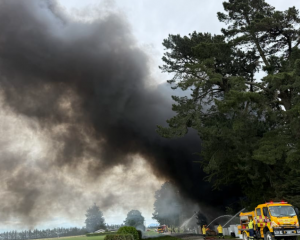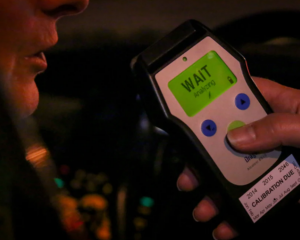
Draft school curriculums contain less Māori because they are more specific about what teachers should teach, the Ministry of Education says.
It also insists that it - not foreign contractors - is responsible for the drafts published last week, which covered six learning areas for Years 0-10.
The drafts have attracted considerable criticism from a range of teachers and subject associations unhappy with the amount of content, the lack of Māori, and the high level of prescription of what teachers should teach.
Pauline Cleaver, the ministry's deputy secretary in charge of its curriculum centre, told RNZ the ministry would take feedback seriously over the six-month consultation period.
She said it would hold focus groups this week and was beginning to engage with local principals' associations.
"We'll consider all feedback, we always do, and we provide advice then to government on... what should be changed or what should be considered out of that feedback," Cleaver said.
Several subject associations warned the drafts included more content than schools would be able to teach.
Cleaver said schools could tackle that by designing learning that combined subjects, such as using the eruption of Mount Tarawera to teach both science and social sciences.
"It's not intended to crowd out teachers being able to bring that magic to life and make that learning authentic and really engaging for young people," she said.
"If we haven't got that mix right, we really want to hear from people so that we don't lose teachers being able to do the thing they do best - know their kids and engage them."
Several groups were unhappy that the drafts included fewer Māori words and concepts and references to the Treaty of Waitangi.
Cleaver said it was not the result of any directive, written or verbal.
She said it happened because the contents were "really specifically chosen to be clear about what knowledge and what practices young people need to learn" and there was more focus on disciplinary language.
"It may be that in places in that specificity and clarity we've given teachers, we haven't used as much Te Reo as we've used in the past."
Cleaver said the curriculum framework "reflects the treaty" and partnership was still an important part of Te Mātaiaho, the overarching curriculum framework and teachers were still expected to use te reo in their teaching, and students were explicitly taught to decode and read kupu Māori with correct pronunciation.
"I know that right across the learning areas Te Reo, Te Ao Māori concepts are being used, but if through the feedback people think we can strengthen that in areas I'll be really interested to see those examples," she said.
Cleaver said the drafts were not the work of overseas contractors.
"The ministry holds the pen on the curriculum and the ministry makes all the decisions about what content is in the curriculum," she said.
Cleaver said the ministry took input from New Zealand subject associations "some of which we've used and some of which we haven't been able to use" and "other focus groups".
"We also compared ourselves and benchmarked with overseas countries to make sure that our knowledge, sequences and coherence was as strong as we thought it needed to be, but we're really clear here that we're writing a New Zealand curriculum for New Zealand kids and we want New Zealand teachers to be able to design really great learning from it," she said.
Cleaver denied the international history aspect of the Social Sciences curriculum was lifted from the UK's history curriculum.
She said different countries' history curriculums were similar because the chronological order of history did not change.
The NZ History Teachers Association said a weakness of the draft was that it taught history in chronological order rather than according to the complexity of the topics.
Cleaver said schools would still be able to design local curriculums but it was not the place of the national curriculum to provide detail about content that lay with schools.
She said students needed to understand where they came from.
Cleaver said deciding what to include in a curriculum was a fine balance.
She said the intent was to ensure all students had high expectations and that all teachers were really clear about what students needed to know, understand and do.
"We want that knowledge to be built over time and we want teachers to be able to notice when there are gaps and be able to respond to that in really timely ways and the net result of that is we're looking for much more equitable outcomes for all students across Aoteaora," she said.
What teachers say
Some teachers and their subject associations have reacted strongly to draft curriculum documents published last week and to updates to the already-published English and maths curriculums.
A common theme was that they could not see evidence of their input into the curriculum writing process, the draft curriculums contained more content than could be reasonably taught in the time allocated for their subject, and there were fewer references to matauranga Māori and no meaningful grounding in the Treaty of Waitangi.
Here's a summary of what they had to say:
Te Mātaiaho
The name of the curriculum and the framework that underpinned every learning area.
It was rewritten at the same time as the latest drafts.
Though its guiding kaupapa was "to support equity and excellence, reflecting the Treaty of Waitangi / Te Tiriti o Waitangi", various groups said it was no longer a treaty-based document and should not bear the name "Te Mātaiaho".
Te Akatea, the Māori principals and education leaders association, said it recolonised education and perpetuated racism and inequity.
Social sciences
Includes history, geography, civics and society, and economic activity.
The Aotearoa Social Studies Educators' Network said it looked like a collection of facts rather than a knowledge-rich curriculum.
It said its members' input had been ignored and the volume of material was unmanageable within the contact time allocated to the subject.
The NZ History Teachers Association said including more global history was not necessarily a bad thing, but that part of the curriculum appeared to be copied from the British curriculum, which had itself been described as a pub quiz not a curriculum. "This is an explicit recolonisation of our curriculum," it said.
The association said teachers would have little to no opportunity to localise history, which would remove iwi and hapu history from the curriculum.
Arts
Includes music, visual arts, and performing arts - a new subject area combining dance and drama.
Organisations representing drama, dance and music teachers all expressed dissatisfaction with the curriculum.
Their complaints included a narrow focus on training performers, greatly reduced reference to Māori arts and knowledge, and a misunderstanding of the arts in education.
Technology
Technology Education New Zealand said the draft ignored teachers' recommendations and combined materials and processing technologies.
It said teachers would have little time to teach the subject because the draft indicated schools should allocate four-and-a-half hours a week for technology, arts, and health and PE combined.
Health and Physical Education
Physical Education New Zealand said the draft had a narrow focus on "drills and skills" rather than the broader goals of PE.
It said the draft did not reflect the intent, evidence, or depth of physical education as a learning area and lacked clear evidence-based learning progressions.
The association said its members were shut out of the later stages of drafting the curriculum.
The Health Education Association said it was not sure teachers in Years 0-10 would have enough time to get through everything they were expected to teach in health and PE.
It said the curriculum contained less matauranga Māori and, for the first time in decades, referred to sex education instead of relationships and sexuality education.
Science
No public response provided by teacher associations.
Learning Languages
The New Zealand Association of Language Teachers was "appalled by the new placement of and time allocated to learning languages" including the official languages te reo Māori and NZ sign language.
It said learning languages was not compulsory though the curriculum draft suggested 20 hours per year from Y0-8 and, 60 hours per year in Y9-10.
"There are no high-performing education systems that treat language learning as entirely optional," it said.
Maths
Primary schools had been using the maths curriculum since the start of the year, but it was recently rewritten following a review.
Maths education professors said the revisions were significant and meant much of the effort that went into introducing the new curriculum earlier this year was wasted.
They were said the revised version expected pupils to learn too much in a single year.
English
Primary schools had been using a new English curriculum since the start of the year and were generally positive about its required use of structured literacy for teaching children to read.
The Association for Teachers of English was highly critical of the process for writing the secondary school English curriculum.
It said the curriculum was not great and its "minimal reference to Te Ao Māori" was problematic.
However, teachers could make it fit most English programmes they already delivered.













